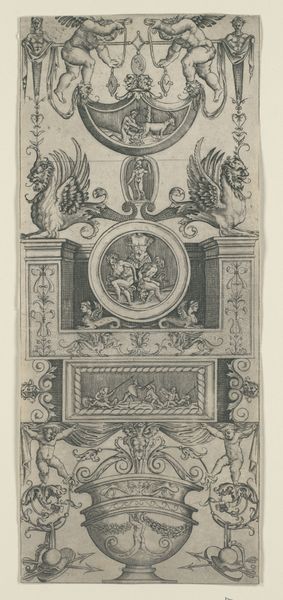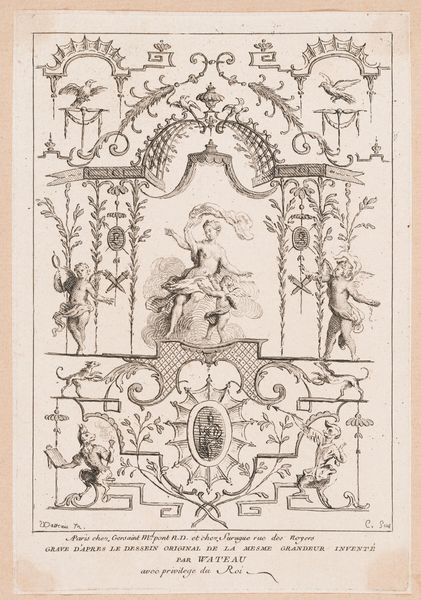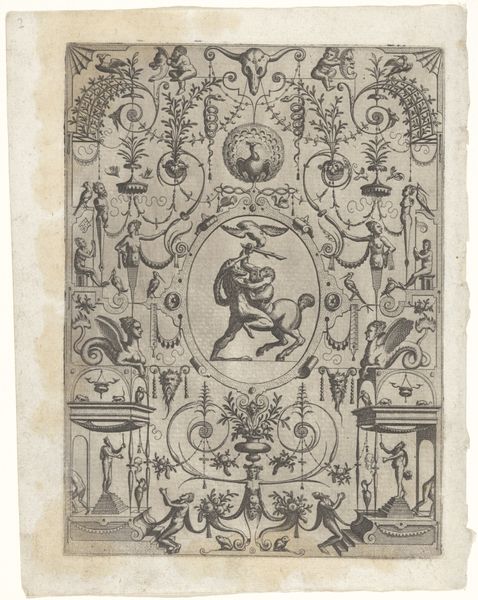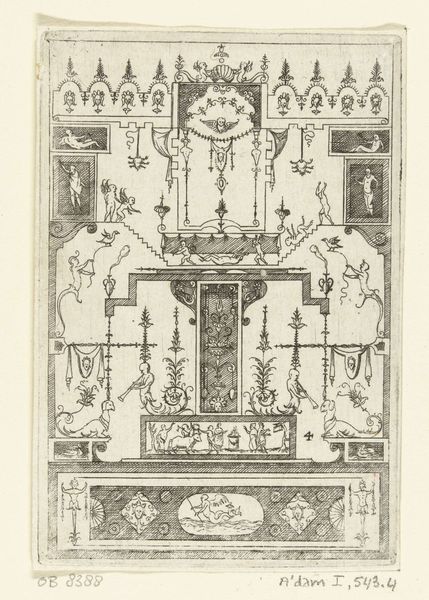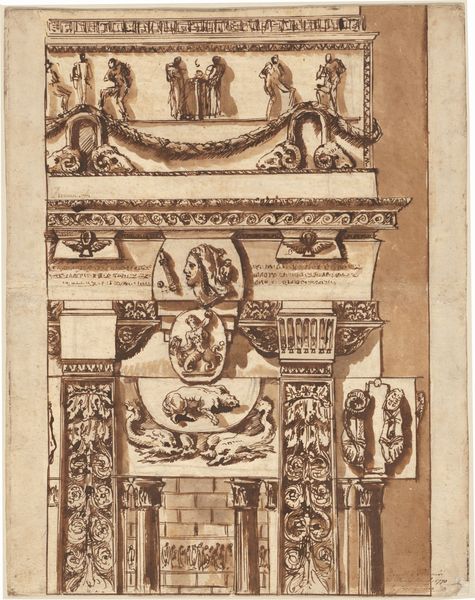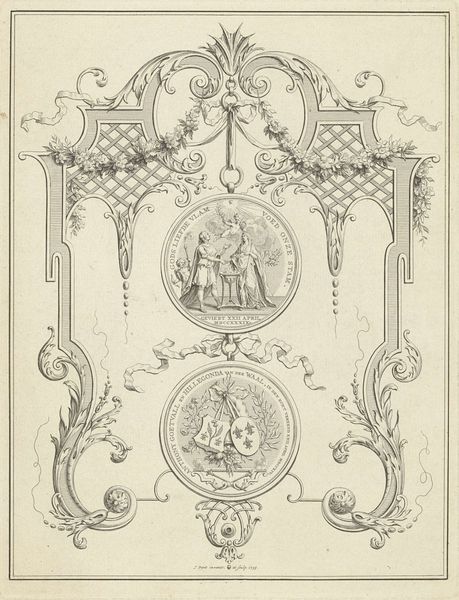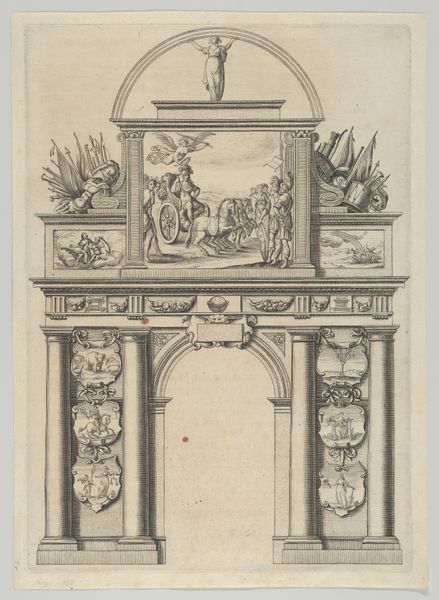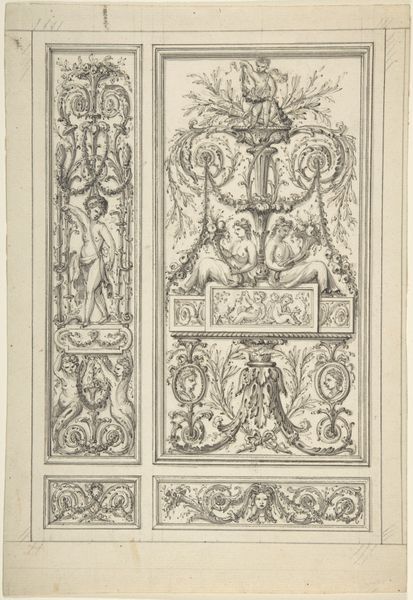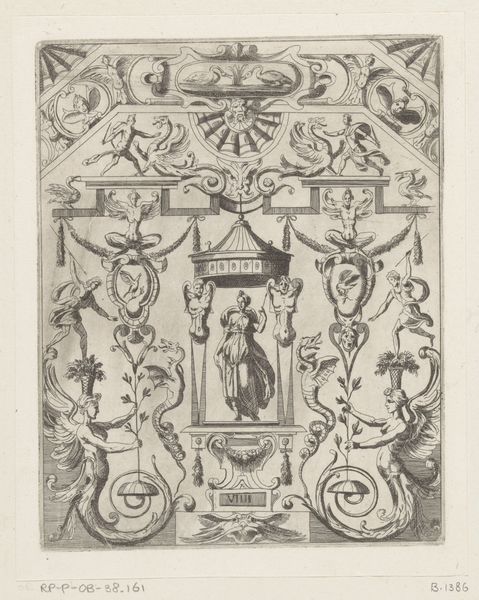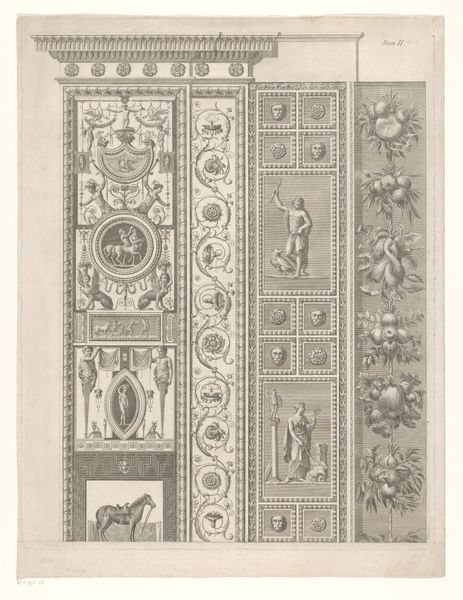
drawing, print, paper, ink, engraving
#
drawing
#
allegory
# print
#
paper
#
ink
#
classicism
#
pen-ink sketch
#
pen work
#
sketchbook drawing
#
history-painting
#
academic-art
#
engraving
Dimensions: height 162 mm, width 119 mm
Copyright: Rijks Museum: Open Domain
Curator: Here at the Rijksmuseum, we have a print dating from the early 18th century titled "Hebreeuwse, Griekse en Romeinse legervanen," or "Hebrew, Greek and Roman Army Flags," by Jacob Houbraken. Editor: Well, hello there, ancient battle flags! The sepia ink on paper gives it such a warm, antique feel—like it's a treasured page torn from some forgotten strategist’s notebook. I can almost smell the papyrus and beeswax. Curator: The scene is dominated by what appears to be a wall display of these flags or emblems, each meticulously rendered and arranged in a grid. The flags themselves bear a range of symbols, from animals to celestial bodies, each representing, I assume, the identities and values of different military factions. Editor: The banners have an intriguing quality that draws me in. The lion flag feels heraldic and almost medieval in its design and there's something so human in our persistent use of animal symbols, the urge to find our strength in beasts. What do you think that speaks to? Curator: Indeed. It's all a system of signification—a means for societies to crystallize their aspirations and allegiances in memorable, visual form. These aren't mere decorations. They speak to deeply-rooted cultural memories. Note the use of Hebrew and classical imagery intertwined. Consider how that mixing could represent evolving European attitudes toward classical tradition alongside scriptural history in the Age of Enlightenment. Editor: You know, seeing these carefully crafted emblems reminds me that every symbol has a life. The artist gives those historic battle-symbols continued existence, keeping ancient meanings alive through each carefully drafted line. How clever to make one’s drawing an active means of cultural conservation! Curator: Houbraken understood, likely, the lasting importance of emblems in culture. He also likely meant this collection to function as its own system for readers: perhaps inviting them to ponder how symbolism shifts through cultural translation, from its roots to our time. Editor: So beautiful! The image definitely invites its viewers to look more deeply, and perhaps, remember, too. It’s amazing to imagine that a piece of paper could contain echoes of battles, beliefs, and whole civilizations!
Comments
No comments
Be the first to comment and join the conversation on the ultimate creative platform.
